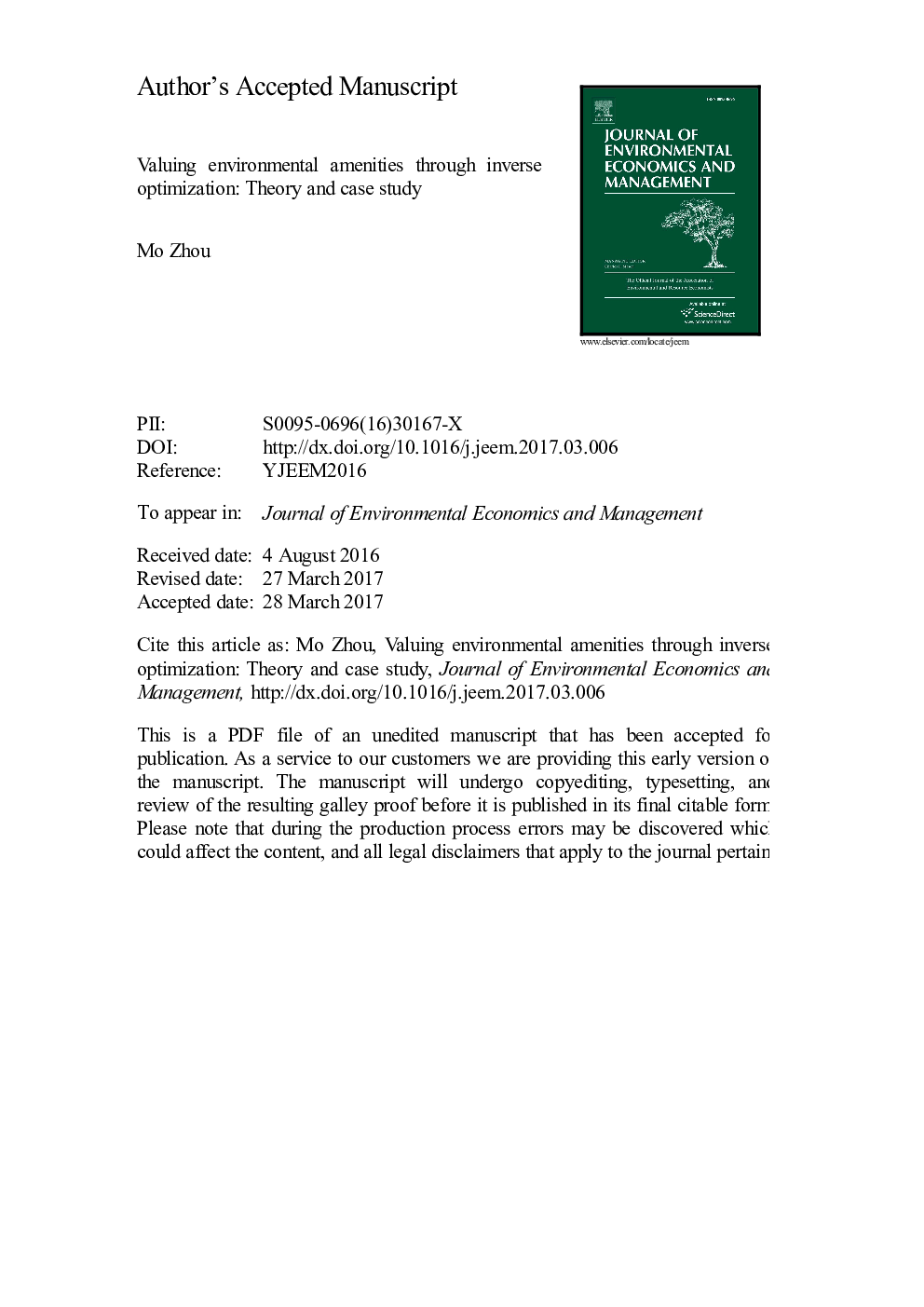| Article ID | Journal | Published Year | Pages | File Type |
|---|---|---|---|---|
| 5100420 | Journal of Environmental Economics and Management | 2017 | 34 Pages |
Abstract
Amenity values of private forests are implicit but play a critical role in decision and policy making. This study presents an innovative valuation approach integrating techniques of operations research and economic theory of pricing environmental goods. A forest planning problem was inversed through altering its reward function of timber values so that the observed harvesting behavior became optimal. The discrepancy between the original and new rewards uncovered amenities values which were linked to forest attributes via hedonic models. This method was applied to a case study of the U.S. southern pine region. Depending on forest conditions, total economic values of amenities varied from zero to just under one thousand dollar per ha. At a discount rate of 3%, a typically managed forest generated on average $243 haâ1 of amenities values per annum, more than twice of harvested timber values. Structural diversity and density of large pine trees were the key determinants to preserving forests for environmental amenities.
Keywords
Related Topics
Social Sciences and Humanities
Economics, Econometrics and Finance
Economics and Econometrics
Authors
Mo Zhou,
